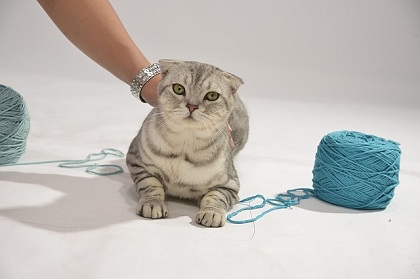How to Teach Children to Handle a Cat Properly?
How to Teach Children to Handle a Cat Properly?
Children and cats playing together are the most beautiful image for every cat owner and parent. But, for many of us, it seems that we have to be patient, persistent and compassionate to make that image alive. Namely, we need to put a lot of effort if we want to ensure that the two can go well together, particularly when children are too young. Young children usually do not understand what it means to treat a cat kindly and with respect. They need to learn it. According to feline experts, if our child likes to squeeze, twitch or poke a cat, we should hold up his hand until he opens it and only then allow him to pet the cat. A good way of how to teach children to handle a cat properly is to show him by our own example. According to psychologists, there is no better way to teach someone something, especially young children, than by using an example. If we choose kind and respectful approach toward a cat, kids will sooner or later adopt this type of behavior as their own. It might be true that we need more patience and more time before toddlers comprehend how to interact with cats, but it will definitely pay off. However, if a child has difficulties when interacting with cats, then we need to help kitty to withdraw in a more secure place. Before we teach children how to handle a cat properly, we need to protect the both of them. The article “Cats and Children: 10 Things Every Parent Should Know” provides us with useful tips on how to make more space for a cat.
How to Teach Children to Handle a Cat Properly?
Create a Cat-Friendly Environment
This really comes down to two aspects: the ability to escape and the ability to have access to kid-free zones. This will be crucial when the baby becomes mobile. Your cat needs to be able to climb up to an elevated area (typically, a cat tree or perch) that is out of reach of baby’s fingers. If your cat has a safe and comfortable perch where he can watch the household activity without having to be in the center of it, he’ll feel much less stressed. Cats prefer to escape rather than engage in conflict so if you make sure your cat has multiple avenues to get to elevated, safe areas, it will greatly decrease the chance of an unwanted encounter.
As for kid-free zones, these will be where your cat sleeps, eats and eliminates. Make sure that when your cat is either napping, chowing down or using the litter box, he doesn’t have to worry about a toddler suddenly appearing around the corner. The litter box should be in a room that is off limits to the young child. You can easily do this by installing a baby gate. You can either cute a hole in the gate just large enough for the cat to get through or you can raise the raise off the ground enough for kitty to sneak in underneath. Another option is to place a stool or box on the other side of the gate so the cat can jump the gate and land on the elevated surface on the other side.
Don’t make the mistake of thinking that installing a covered litter box will keep the cat safe. All a covered box will accomplish is to potentially make your cat feel trapped and confined.
Feline experts also recommend allowing a child to take care of a cat. They can feed a cat by our supervisory and can help us with the emptying litter tray. Taking care of cat needs will pave the way for establishing a strong bond between them. When they make a secure bond, we can relax. They will trust each other, which will lessen possibilities to hurt mutually one another.










